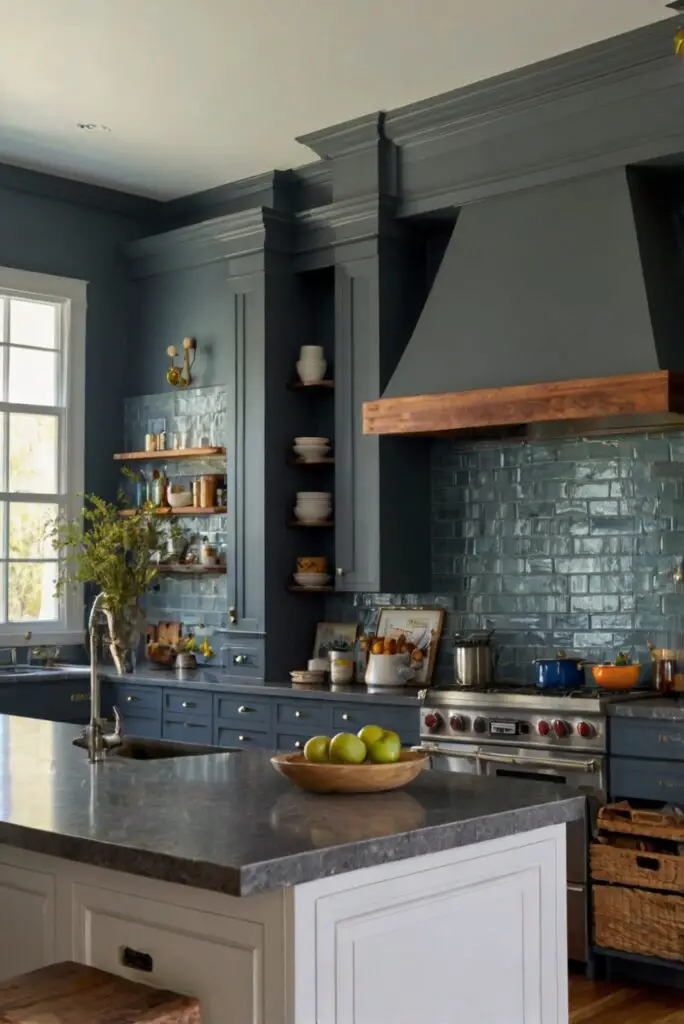Creating a harmonious color scheme in your kitchen involves a delicate balance between walls, cabinets, and countertops. Discover expert tips here.
How do you create a cohesive color scheme between kitchen walls, cabinets, and countertops?
To create a cohesive color scheme in your kitchen, start by selecting a primary color for your walls. Choose a color that complements your cabinets and countertops. Consider using a color wheel to find matching or harmonious hues. For example, if your cabinets are dark, lighter walls can create a nice contrast. If you prefer a monochromatic scheme, choose shades of the same color for a harmonious look. Remember to consider natural light in your kitchen as it can affect how colors appear. Be sure to test paint samples in different lighting conditions to see how they look throughout the day.
How can I choose colors that create a harmonious flow between my kitchen walls, cabinets, and countertops?
To create a harmonious color scheme in your kitchen, it is essential to consider the undertones of the colors you choose. Selecting colors with similar undertones helps create a cohesive look. For example, if your cabinets have warm undertones, opt for wall colors and countertops that also have warm undertones. This will ensure that the colors complement each other rather than clash. Additionally, using a color wheel can be helpful in identifying complementary colors that work well together.
What is the best way to ensure that the colors I select for my kitchen coordinate well with each other?
My Lovely Spring Paint for 2025
Ready for a Spring Makeover? Explore the Freshest 2025 Paint Trends!
White Sage/Green SW Pistachio green Soft blue Honeysweet/Orange Pink Sugar Sage Tint BMAs an Amazon Associate, I may earn a commission from qualifying purchases at no extra cost to you.
One effective strategy is to create a mood board or color palette that includes swatches of the colors you are considering for your kitchen. By visualizing how the colors look together, you can better assess their compatibility. It is also recommended to test paint samples on your walls and cabinets to see how the colors appear in different lighting conditions throughout the day. This hands-on approach can prevent any surprises once the colors are fully applied.
Can I mix and match different hues for my kitchen walls, cabinets, and countertops while maintaining a cohesive look?
Mixing and matching hues can add depth and visual interest to your kitchen. However, it is crucial to ensure that there is a unifying element among the colors to maintain a cohesive look. This can be achieved by incorporating a common color throughout the space, such as in decor elements like rugs, curtains, or artwork. Additionally, balancing out bold hues with neutral tones can prevent the space from feeling overwhelming while still allowing for creativity in your color choices.
What colors work best for creating a modern and sleek appearance in the kitchen?
For a modern and sleek look in the kitchen, consider using monochromatic color schemes or opting for neutral tones like shades of gray, white, or black. These colors create a clean and sophisticated aesthetic and provide a timeless appeal that can easily be updated with accessories or accent colors. Additionally, incorporating metallic finishes like stainless steel or brushed nickel can enhance the modern feel of the space.
How important is it to consider the overall style and decor of my kitchen when choosing a color scheme?
My fAV Spring DECOR for 2025
Discover Spring’s Best 2025 Decor Combinations – Perfect for Any Room!
Oversized Indoor Plants White Curved Sofas Rugs BOH Brown Cream Moroccan Hype Boho Rug Outdoor Patio Furniture Sets Topfinel Pillow CoversAs an Amazon Associate, I may earn a commission from qualifying purchases at no extra cost to you.
Considering the overall style and decor of your kitchen is crucial when selecting a color scheme. The colors you choose should complement the existing elements in the space, such as the flooring, backsplash, and appliances. For example, if your kitchen features traditional cabinetry and classic finishes, opting for a timeless color scheme with muted tones can enhance the cohesive design. On the other hand, if you have a contemporary kitchen with sleek finishes, bold and contrasting colors may be more suitable.
Are there specific color combinations that are considered timeless for kitchens?
While trends come and go, certain color combinations have stood the test of time in kitchen design. Classic pairings like white and navy, gray and beige, or black and white continue to be popular choices for kitchens due to their versatility and timeless appeal. These color combinations can adapt to various styles and themes and serve as a solid foundation for your kitchen’s design. Incorporating these timeless combinations can ensure that your kitchen remains stylish and visually appealing for years to come.
How can I incorporate accent colors into my kitchen design without overwhelming the space?
When incorporating accent colors into your kitchen, focus on using them strategically in small doses. Accent colors can be introduced through accessories like bar stools, pendant lights, or decorative elements such as vases or artwork. By limiting the use of accent colors to specific areas or features in the kitchen, you can create visual interest without overpowering the space. Additionally, using a neutral backdrop for your walls, cabinets, and countertops allows the accent colors to pop and make a statement without clashing with the overall color scheme.







